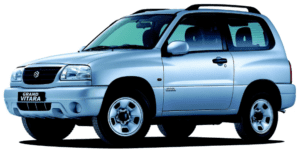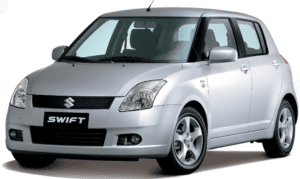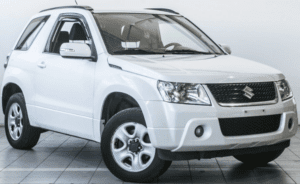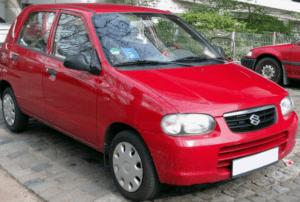Suzuki Repair Manual PDF

Navigating the Legacy of Suzuki Cars: A Journey Through Innovation and Reliability
Introduction:
Suzuki cars have established themselves as a formidable presence in the automotive industry, known for their reliability, affordability, and versatility. With a storied history spanning over a century, Suzuki has continuously evolved its lineup to meet the needs of drivers around the world. Let’s embark on a journey to explore the legacy, innovation, and impact of Suzuki cars on the global automotive landscape.
Origins and Evolution:
Suzuki’s automotive journey began in 1909 when Michio Suzuki founded the Suzuki Loom Works, initially focusing on the production of weaving machines. However, the company’s transition into the automotive sector occurred in the 1930s, with the development of compact cars and motorcycles.
In 1955, Suzuki introduced its first mass-produced car, the Suzulight. This compact and economical vehicle marked Suzuki’s entry into the automotive market, laying the foundation for its future success. Over the years, Suzuki expanded its lineup to include a diverse range of vehicles, from compact cars and SUVs to rugged off-road vehicles and motorcycles.
Innovation and Engineering Excellence:
Throughout its history, Suzuki has been at the forefront of automotive innovation, introducing groundbreaking technologies and engineering solutions. From pioneering the development of lightweight and fuel-efficient vehicles to advancing safety features and drivetrain systems, Suzuki has continually pushed the boundaries of automotive design and performance.
One notable example of Suzuki’s innovation is the Suzuki Swift, introduced in 1983. Renowned for its agile handling, efficient engines, and compact dimensions, the Swift quickly became a global bestseller, earning accolades for its blend of style, practicality, and driving dynamics. Subsequent iterations of the Swift further solidified its reputation as a benchmark in the compact car segment.
Global Impact and Market Presence:
Suzuki’s global footprint extends across more than 190 countries and regions, with a diverse lineup of vehicles tailored to meet the needs of different markets. From bustling city streets to rugged off-road trails, Suzuki cars have earned a reputation for their reliability, durability, and adaptability in various driving conditions.
In emerging markets, Suzuki’s compact and affordable vehicles have become a popular choice among drivers seeking practical transportation solutions. Meanwhile, in developed markets, Suzuki’s reputation for innovation and value has resonated with drivers looking for fuel-efficient and environmentally friendly alternatives.
Sustainability and Future Outlook:
As the automotive industry continues to evolve, Suzuki remains committed to sustainability and environmental stewardship. The company has invested in research and development to develop hybrid and electric vehicles, aiming to reduce carbon emissions and minimize its ecological footprint.
Suzuki’s dedication to innovation and sustainability is exemplified by its commitment to producing vehicles that are efficient, reliable, and eco-friendly. By embracing emerging technologies and adopting sustainable practices, Suzuki is poised to shape the future of mobility and continue its legacy of excellence in the automotive industry.
Conclusion:
In conclusion, Suzuki cars have left an indelible mark on the automotive landscape, driven by a legacy of innovation, reliability, and versatility. From its humble beginnings as a manufacturer of weaving machines to its status as a global automotive powerhouse, Suzuki has demonstrated a steadfast commitment to excellence and customer satisfaction.
As Suzuki continues to innovate and adapt to changing market dynamics, the legacy of its cars will endure, inspiring drivers around the world to embrace adventure, explore new horizons, and experience the joy of driving. With a focus on innovation, sustainability, and customer-centric values, Suzuki remains poised to shape the future of mobility and continue its journey as a leader in the automotive industry.
Repair and maintenance of Suzuki cars involve a combination of routine tasks and occasional troubleshooting. Here are some general guidelines for Suzuki car repair and maintenance:
Maintenance:
- Oil Changes:
- Change the engine oil regularly according to the recommended schedule in the owner’s manual.
- Replace the oil filter with each oil change.
- Fluid Checks:
- Regularly check and top up fluids such as coolant, brake fluid, power steering fluid, and transmission fluid.
- Brake System:
- Inspect brake pads and replace them if they are worn.
- Check brake fluid levels.
- Tire Maintenance:
- Rotate tires regularly.
- Check tire pressure and tread depth.
- Align the wheels as needed.
- Air Filter:
- Replace the engine air filter at specified intervals.
- Battery:
- Inspect the battery for corrosion and ensure the terminals are clean.
- Check the battery’s charge level.
- Lights and Signals:
- Regularly check headlights, brake lights, turn signals, and other lights.
Occasional Maintenance:
- Timing Belt or Chain:
- Follow the manufacturer’s recommendations for replacing timing belts or chains.
- Spark Plugs:
- Replace spark plugs as recommended in the owner’s manual.
- Suspension System:
- Check shocks and struts for wear.
- Exhaust System:
- Inspect the exhaust system for leaks and damage.
Troubleshooting and Repairs:
- Diagnosis:
- Use diagnostic tools to identify and troubleshoot any warning lights or performance issues.
- Electrical System:
- Address electrical issues promptly, such as malfunctioning lights or power accessories.
- Engine and Transmission:
- Attend to any unusual noises, vibrations, or performance issues promptly.
- Keep up with transmission maintenance, including fluid changes.
- Cooling System:
- Address any overheating issues promptly.
Professional Assistance:
- Authorized Service Centers:
- Documentation:
- Keep a record of all maintenance and repairs performed, which can be helpful for future reference and resale value.
Always refer to the specific model’s owner’s manual for the manufacturer’s recommendations on maintenance intervals and procedures. If you’re not comfortable performing certain tasks, or if you encounter complex issues, seek professional assistance from qualified mechanics or Suzuki service centers. Regular maintenance can contribute to the longevity and reliability of your Suzuki car.
Suzuki Workshop Manual -Suzuki service manual free download
Suzuki Grand Vitara S416 workshop manual

Suzuki Swift Workshop manual 2000-2010

Suzuki Grand Vitara 2011 JB416-JB420

Suzuki Grand Vitara 2005 FT – GT repair manual

Suzuki JIMNY 1998 – 2018 factory service manual

Suzuki Alto RF410 Service Manual

Suzuki Swift Sport RS416 Service Repair Manual

Suzuki LJ80 Service Manual

Suzuki Grand Vitara SQ416 420 625 Wiring Manual

Suzuki SJ Wiring Diagrams

Suzuki SJ Trouble Shooting
Suzuki Samurai Spare Parts Catalog

Suzuki Master Book Fault Codes DTC
Camping World Towing Guide: Suzuki Repair Manual Car manuals free download, technical information.: Suzuki Repair Manual Free car repair manuals pdf download: Suzuki Repair Manual

